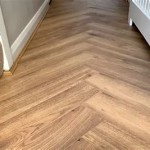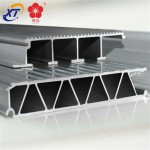Best Flooring Options for Walkout Bathrooms
A walkout bathroom, characterized by its direct access to the outdoors, presents unique flooring challenges. The increased exposure to moisture, temperature fluctuations, and potential dirt and debris necessitates careful consideration when selecting flooring materials. The optimal choice must balance aesthetic appeal with practical requirements such as water resistance, durability, slip resistance, and ease of maintenance. This article will explore various flooring options suitable for walkout bathrooms, highlighting their respective advantages and disadvantages to aid in making an informed decision.
Water Resistance and Moisture Management
The primary concern for any walkout bathroom flooring is its ability to withstand moisture. Due to the direct access to the outdoors, these bathrooms are more susceptible to humidity, splashes from outdoor activities, and potential water intrusion from rain or snow. Flooring materials that are porous or prone to water damage should be avoided. The ideal flooring will be completely waterproof or highly water-resistant, preventing water from seeping through and damaging the subfloor. Proper installation and sealing are also crucial, regardless of the flooring material chosen, to further mitigate the risk of water damage.
Some flooring options, such as natural stone and tile, while durable, can be porous and require regular sealing to maintain their water resistance. Improperly sealed grout can also become a haven for mold and mildew, necessitating diligent cleaning and maintenance. Alternatively, materials like vinyl and epoxy offer inherently waterproof surfaces that are less susceptible to water damage and easier to clean.
Furthermore, consider the subfloor beneath the flooring. If the subfloor is prone to moisture, it may be necessary to install a moisture barrier before laying the flooring. This barrier will prevent moisture from rising through the subfloor and damaging the flooring material. The type of subfloor and the local climate should be taken into account when selecting a moisture barrier.
Durability and Traffic Considerations
Walkout bathrooms typically experience higher foot traffic than standard bathrooms, especially if they serve as entry points from pools, gardens, or patios. The flooring needs to withstand frequent use, potential impacts, and the abrasive action of dirt, sand, and other outdoor debris tracked indoors. Durability is therefore a key factor in selecting a flooring material. The flooring should resist scratches, dents, and fading, ensuring long-term performance and minimizing the need for frequent replacements.
Certain materials, such as porcelain tile and concrete, are known for their exceptional durability and resistance to wear and tear. These options are well-suited for high-traffic areas and can withstand the rigors of outdoor use. Luxury vinyl tile (LVT) and sheet vinyl also offer good durability and can be a cost-effective alternative to more expensive materials. However, the quality of the vinyl product significantly impacts its durability, so it is essential to choose a high-quality option.
The finish of the flooring also plays a role in its durability. Matte finishes tend to be more resistant to scratches and scuff marks than glossy finishes. Texturing can also help to conceal minor imperfections and provide better traction. When selecting a flooring material, consider the potential for scratches and dents, and choose a finish that can withstand the expected level of use.
Slip Resistance and Safety
Safety is a paramount consideration in any bathroom, but it is even more critical in a walkout bathroom due to the increased likelihood of wet floors. The flooring must provide adequate slip resistance to prevent accidents, especially when transitioning from outdoor to indoor spaces. Smooth, polished surfaces can become slippery when wet, posing a significant safety hazard. Opting for textured or slip-resistant flooring can significantly reduce the risk of falls.
Several flooring options offer inherent slip resistance. Textured porcelain or ceramic tiles are a good choice, as the textured surface provides better traction. Natural stone options like slate or travertine also tend to be more slip-resistant than polished marble or granite. Additionally, specialized slip-resistant coatings can be applied to certain flooring materials to enhance their safety.
It's important to consider the Americans with Disabilities Act (ADA) guidelines for slip resistance when selecting flooring for a walkout bathroom, especially if the bathroom is accessible to individuals with mobility limitations. The ADA sets standards for accessible flooring, including requirements for slip resistance and surface texture. Adhering to these guidelines will ensure that the bathroom is safe and accessible for all users.
Aesthetic Considerations and Design Integration
While practicality is paramount, the aesthetic appeal of the flooring should not be overlooked. The flooring should complement the overall design of the bathroom and seamlessly integrate with the surrounding outdoor environment. Choosing colors, patterns, and textures that harmonize with the landscaping and architectural style will create a cohesive and visually appealing space. The flooring can also serve as a design element, adding character and personality to the bathroom.
Numerous flooring options are available in a wide range of colors, patterns, and textures to suit various design preferences. Natural stone offers a timeless and elegant look, while tile allows for intricate designs and patterns. Vinyl flooring can mimic the appearance of natural materials like wood or stone at a lower cost. Concrete can be stained or stamped to create unique and modern looks.
Consider the lighting in the bathroom when selecting flooring. Darker flooring can make a small bathroom feel smaller, while lighter flooring can create a more spacious and airy feel. Natural light from the outdoors can also affect the appearance of the flooring, so it's important to see samples of the flooring in the actual bathroom setting before making a final decision. The flooring should also be easy to clean and maintain, as walkout bathrooms tend to accumulate more dirt and debris from the outdoors.
Specific Flooring Material Analysis
Now that the general considerations have been discussed, a closer examination of specific flooring materials is warranted.
Porcelain Tile
Porcelain tile is a popular choice for walkout bathrooms due to its durability, water resistance, and aesthetic versatility. It is manufactured at high temperatures, resulting in a dense, non-porous material that is highly resistant to water damage, scratches, and stains. Porcelain tile is available in a wide range of colors, sizes, and textures, allowing for diverse design options. Textured porcelain tile is particularly well-suited for walkout bathrooms due to its slip resistance.
Furthermore, porcelain tile is relatively easy to maintain, requiring only regular cleaning with a mild detergent. It is also resistant to fading, ensuring that the flooring will retain its color and appearance for many years. While porcelain tile can be more expensive than some other flooring options, its durability and long-term performance make it a worthwhile investment.
Ceramic Tile
Similar to porcelain tile, ceramic tile is a durable and water-resistant option for walkout bathrooms. However, ceramic tile is typically less dense and more porous than porcelain tile, making it slightly less resistant to water damage. Ceramic tile is also available in a wide range of colors, sizes, and textures, but it may not be as durable as porcelain tile in high-traffic areas.
Ceramic tile is generally a more affordable option than porcelain tile, making it a good choice for budget-conscious homeowners. However, it is important to choose a high-quality ceramic tile that is rated for bathroom use. Regular sealing of the grout lines is essential to prevent water damage and mold growth.
Luxury Vinyl Tile (LVT) and Sheet Vinyl
Luxury vinyl tile (LVT) and sheet vinyl are becoming increasingly popular choices for bathrooms due to their water resistance, durability, and affordability. These materials are manufactured with multiple layers, including a wear layer that protects the flooring from scratches and stains. LVT comes in individual tiles or planks, while sheet vinyl comes in large rolls, minimizing the number of seams.
Both LVT and sheet vinyl are highly water-resistant, making them a good choice for walkout bathrooms. They are also relatively easy to install and maintain. LVT can mimic the appearance of natural materials like wood or stone at a lower cost, while sheet vinyl offers a seamless and waterproof surface. However, the quality of the vinyl product significantly impacts its durability, so it is essential to choose a high-quality option with a thick wear layer.
Concrete
Concrete is a durable and versatile flooring option that is well-suited for modern and industrial-style bathrooms. It is highly resistant to water damage, scratches, and stains, making it a good choice for high-traffic areas. Concrete can be stained, polished, or stamped to create a variety of looks. It can also be sealed to enhance its water resistance and prevent staining.
Concrete flooring can be expensive to install, especially if it requires specialized preparation or finishing. It can also be cold and hard underfoot, which may be uncomfortable for some homeowners. However, radiant heating can be installed beneath the concrete to provide warmth. Concrete flooring is a durable and low-maintenance option that can add a unique and modern touch to a walkout bathroom.
Natural Stone (Slate, Travertine, Granite)
Natural stone flooring, such as slate, travertine, and granite, offers a luxurious and durable option for walkout bathrooms. These materials are naturally water-resistant and resistant to scratches and stains. Slate and travertine offer a textured surface that provides good slip resistance, while granite is known for its durability and elegant appearance.
Natural stone flooring can be expensive to purchase and install. It also requires regular sealing to maintain its water resistance and prevent staining. Some natural stones, such as marble, can be porous and prone to etching from acidic substances. However, with proper care and maintenance, natural stone flooring can add a timeless and elegant touch to a walkout bathroom.
Consideration must be given to the type of stone and its treatment before installation. For example, polished granite, while aesthetically pleasing, can be quite slippery when wet, making it a less suitable choice than textured slate for a walkout bathroom.

Walk In Shower Floor Options Bathroom Radiant Heating Warmup

White Modern Master Bathroom With Natural Wood Accents In West Deptford

Farmhouse Bathroom Remodel Sources Lolly Jane

16 Elegant White Primary Bathroom Ideas

Ina Expansive Walkout Basement Farmhouse Style House Plan 10158

Laminate Flooring On Concrete Basement Floors Expert Installation Guide Csg Renovation

The Best Bathroom Colors Based On Popularity

Pin On Bathroom Ideas

Walkout Basement Craftsman Style House Plan 6505 Tiger Creek

Laminate Flooring On Concrete Basement Floors Expert Installation Guide Csg Renovation
Related Posts








